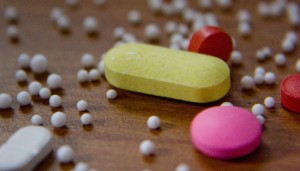A few weeks ago I attended a course entitled “Strategies and Techniques for Analyzing Microbial Population Structure” at the Marine Biological Laboratory in Woods Hole, along with a number of other students, postdocs and faculty engaged in the study of the microbiology of the built environment (as well as the oceans, humans, animals, plants). This excellent …
Just wanted to remind everyone that the deadline for postdoctoral fellowship applications through the Alfred P. Sloan Foundation funded Microbiology of the Built Environment (MoBE) program is September 1, 2016. The program provides support for postdoctoral researchers in laboratories currently engaged in research in the U.S. or Canada. Three awards of $120,000 each will be made in …
You’ve probably heard that the ocean is full of plastic. Here is a guest post about a current crowdfunding campaign to explore the microbes that colonize plastic. Professor Ana Maria Barral from National University (http://www.nu.edu/), a private non-profit in California has launched a crowdfunding campaign to support a recently started project to explore the microbes …
Professor Aubrey Tauer of City University of New York, LaGuardia Community College is running an crowdfunding campaign to support research conducted by her non-profit organization to better understand how sea turtle microbiomes vary in captivity and in wild populations. I asked her to write up something for microBEnet about the project. The campaign ends next week, so check it out …
In the past, we have lamented the poor representation of microbes in natural history museums. And so I must mention that there’s a wonderful microbiome exhibit currently on exhibit at the American Museum of Natural History in New York City. The Secret World Inside You, is a microbe related exhibit co-curated by Susan Perkins and Rob DeSalle, curators at the AMNH. The exhibition …
Noticed Paula Olsiewski’s post about upcoming Wikipedia edit-a-thons for science and wanted to share it here. To celebrate the Wikipedia Year of Science, the Wiki Education Foundation is presenting a series of ‘edit-a-thons,’ workshops and invited talks at conferences throughout the year, presented in partnership with major scientific societies. You can check out upcoming events here, including next …
As posted in this blog last week, an article was published in the ASM Journal Antimicrobial Agents and Chemotherapy on May 26 that describes the first discovery in the United States of mcr-1 gene, responsible for colistin resistance, in E. coli in a patient with a urinary tract infection. Colistin is considered an antibiotic of last resort because, …
The winners of the Bill & Melinda Gates Foundation Global Grand Challenges Round 16 were announced recently. Among the challenge topics included in this round of competition was Novel Approaches to Characterizing and Tracking the Global Burden of Antimicrobial Resistance. The Gates Foundation made six awards in this topic area: Christopher Mason of Cornell University (USA) will generate a global …
microBE.net is an awesome name, so I wasn’t that surprised to find that the CDC has it’s own MicrobeNet that they launched in 2013. MicrobeNet is a free online curated database of emerging bacteria and fungi that aims to improve reference diagnostics and pathogen identification. The database includes genetic sequence data (16S rRNA), biochemical data, morphological characteristics and antibiotic resistance profiles for about 2,400 species, as well …
About half the human population now lives in urban environments. In 2008, populations of more developed nations were about 74% urban, while about 44% of residents of less developed countries lived in urban areas. It is projected that 70% of the world population will be urban by 2050, with most urban growth occurring in less developed countries. While there …


